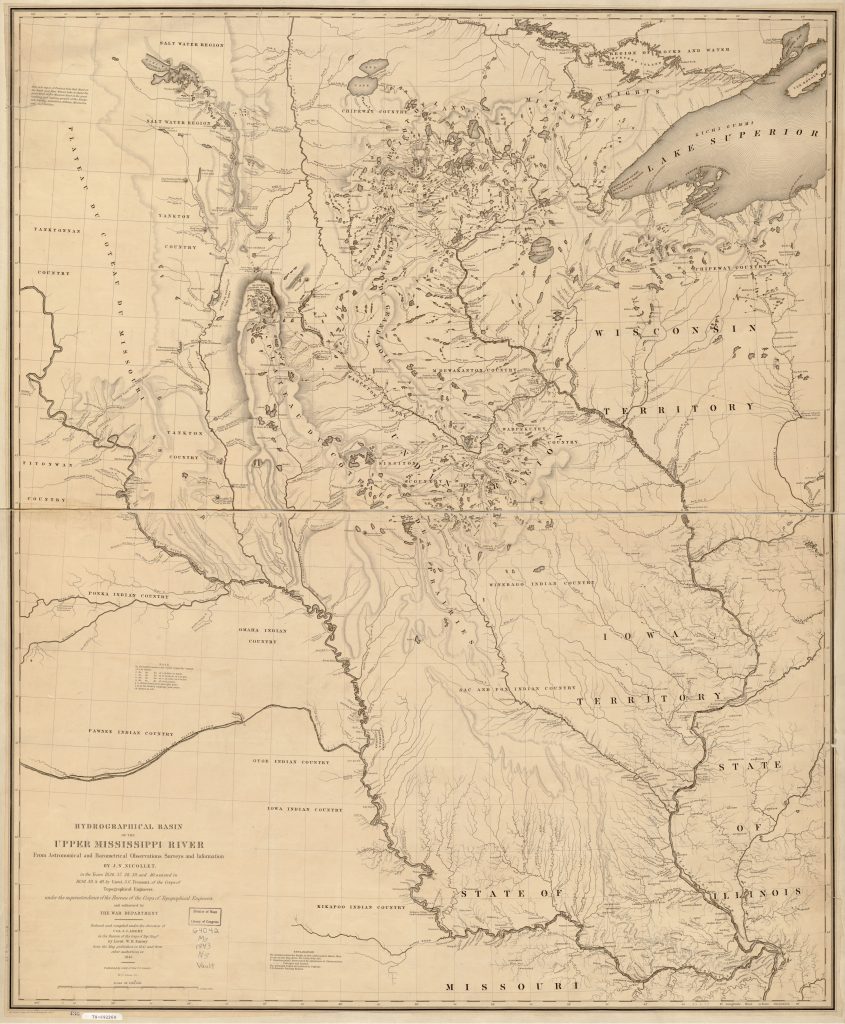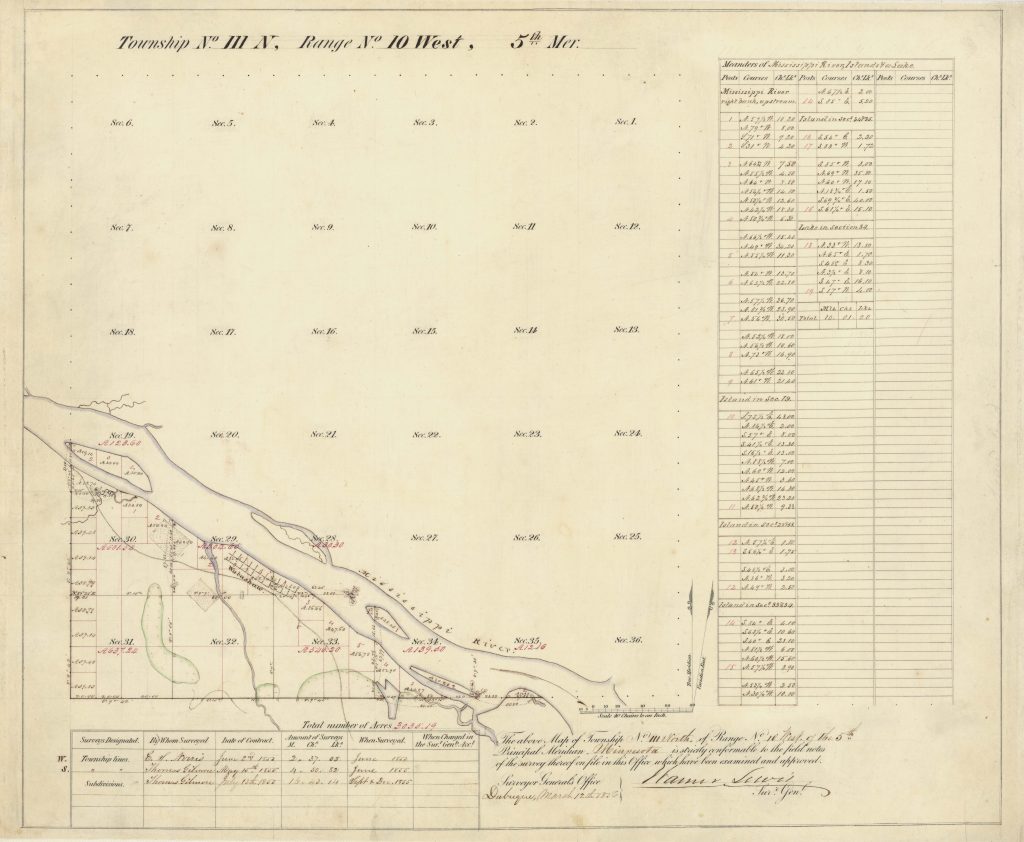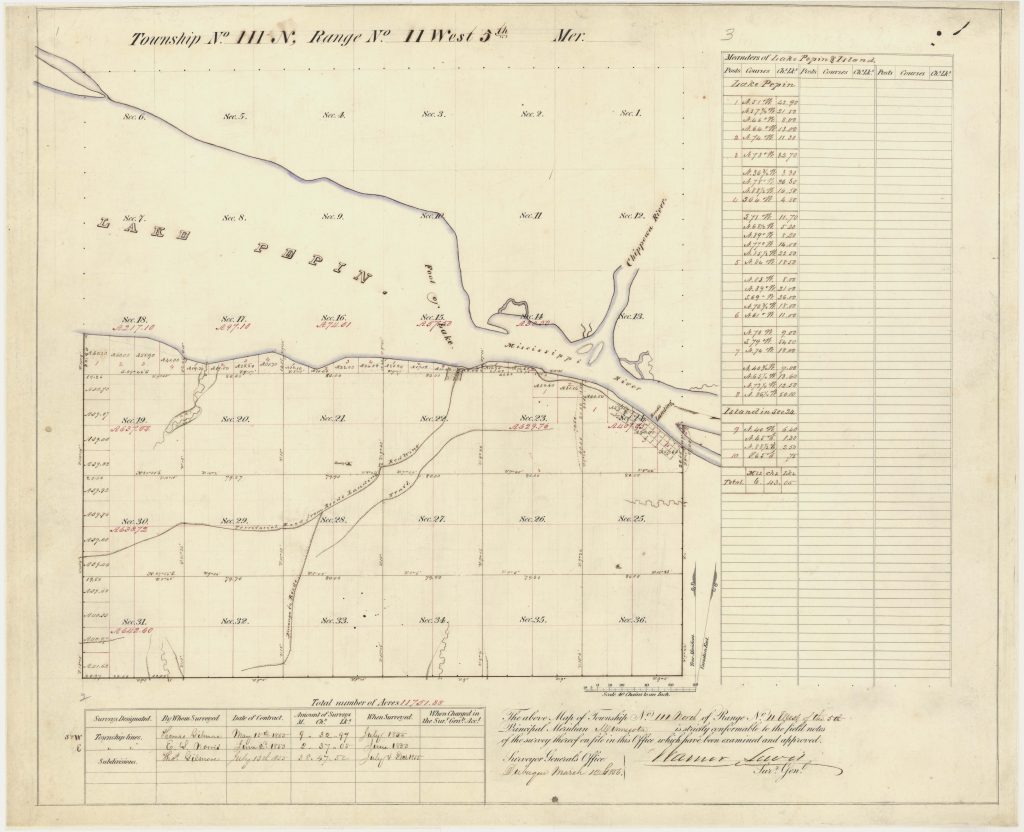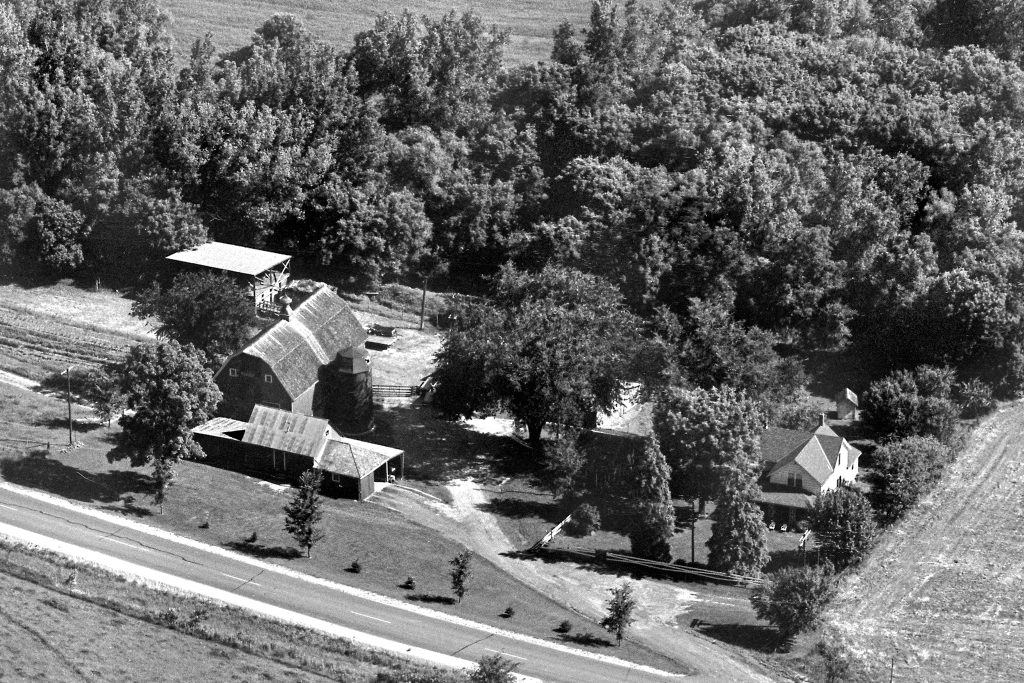Wabasha, where I currently live, is the oldest town in Minnesota, inhabited since 1826. An 1843 map, by Nicollet and Fremont (names you’ll see a lot of in Minneapolis) lists it as the trading post of ‘Roques’ for the half-Indian (mother was the sister of chief Wapasha, for whom the town is named), half-French leader of it. The 1874 Atlas of the State of Minnesota has a history of the region, as well as a few other sources, generally agreeing that the area was inhabited and confirmed in the 1830 treaty, ‘The 2nd Treat of Prairie du Chien’. Generally the area of Wabasha appears to been populated by a people of mixed native and French ancestry for some time before a major wave of European settlement.
The 1820’s were the first days of Minneapolis as well, with the Mendota trading post and Fort Snelling active in the region, although they were officially Indian land and not settled until Indian treaties ‘opened up’ the land around 1850 (see the US-Dakota War of 1862). The local Native Americans were a Dakota branch of the Sioux, who were apparently rivals with the Chippewa (who must have been close as the river coming in from Wisconsin here is called the Chippewa River). My great-great-great-great-uncle George Catlin (I’m guessing on the number of ‘greats’ there, my relatives could give the exact number) is worth mentioning as he traveled among the Native Americans and is paintings are one of the best surviving sources of color portrayals of their dress and lifestyle, and are commonly seen in histories of this time. Another interesting connection is that the suburb where I grew up, along Rice Creek, was home to the Wakpaatonwedan, which were connected to the Wapasha led tribes in this area where I am now.
The 1820’s were the first days of Minneapolis as well, with the Mendota trading post and Fort Snelling active in the region, although they were officially Indian land and not settled until Indian treaties opened up the land around 1850. The local Native Americans were a Dakota branch of the Sioux, who were apparently rivals with the Chippewa (who must have been close as the river coming in from Wisconsin here is called the Chippewa River). My great-great-great-great-uncle George Catlin (I’m guessing on the number of ‘greats’ there, my relatives could give the exact number) is worth mentioning as he traveled among the Native Americans and his paintings are one of the best surviving sources of color portrayals of their dress and lifestyle, and are commonly seen in histories of this time. Another interesting connection is that the suburb where I grew up, along Rice Creek, was home to the Wakpaatonwedan, which were closely connected to the Wapasha led tribes in this area where I am now.
The first somewhat-detailed maps of the Wabasha area come from the 1850’s in the plat survey maps, by which point Wabashaw, Reed’s Landing, and Lake City all existed. Perhaps the most interesting fact for me from the survey maps is that they draw large forests (Red Oak, Linden, hazel thickets in nearby areas) and they have no forests for anywhere near the farm. This confirms that this was originally all grassland. Another interesting fact is the County Road 10 and 61 didn’t exist, okay, no surprise there, but a road/trail did exist from Reed’s Landing and it instead went up the coulee near Camp Lacupolis, then followed loosely where County 10 is today. There is no immediate evidence of that old road in the coulee from what I can tell from the modern road.
And the featured aerial image of this blog post jumps forward 100 years to 1968 which is the earliest photo we have of the Oenning farm. This started in the post-Civil War era and grew. It is fascinating thing to stare at, both at how much is the same and how much has changed. What I cannot tell from the photo is how deep the ravine was at the time. It appears to be there, but not nearly as deep.




